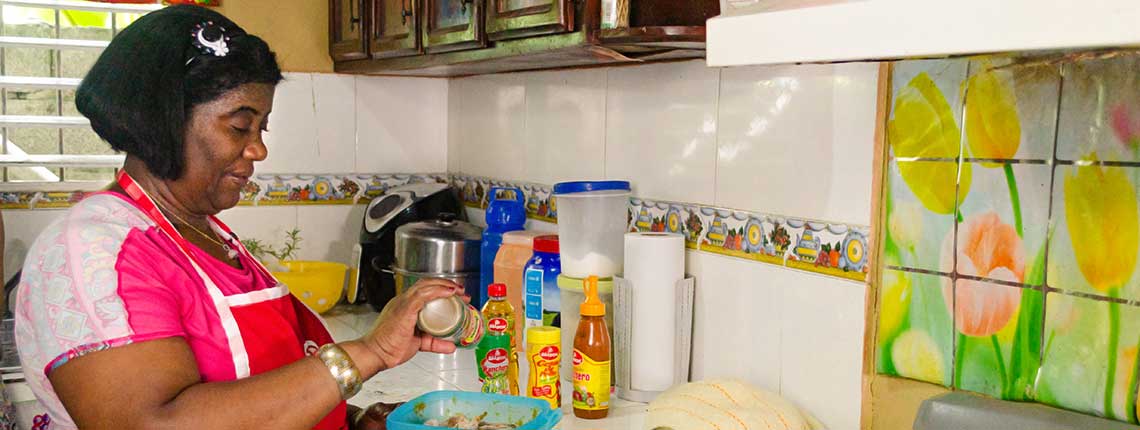In this blog, we highlight statistics that make visible the size and significance of the domestic worker sector. Data from 155 countries and territories were used to examine domestic work worldwide and the findings are published in a new Statistical Brief, prepared jointly by WIEGO and the ILO.
Almost 76 million people in the world are domestic workers
Globally, there are 75.6 million domestic workers aged 15 years and older. Although there are large differences in the numbers of domestic workers across regions, the share of domestic workers in total employment is from 1 per cent to 2 per cent almost everywhere. In a little over half (97) of the 155 countries with data, domestic work accounts for less than 2.5 per cent of total employment. In 29 countries, domestic work accounts for 2.5 to less than 5 per cent of total employment; and in another 29 countries, it accounts for 5 per cent or more of total employment.
More than three-quarters of domestic workers are women
Seventy-six per cent of the world’s domestic workers are women. Globally, domestic work is 4 per cent of women’s employment and 1 per cent of men’s. The vast majority of women in domestic work (around 80 per cent)are engaged as cleaners and helpers, while men in domestic work do a wider range of activities; around one-third report the broad category of security guards, gardeners and building maintenance; around one-quarter are cleaners and helpers; and a little less than one-quarter are drivers.
Domestic workers by country income groups and geographic region: Per cent distribution and numbers of global domestic workers
Where domestic workers are and the work they do
The overwhelming majority (62.2 million, or 82 per cent) of the world’s domestic workers are in developing and emerging countries, while 13.4 million domestic workers are in developed countries. In the developed countries of the Middle East, almost half (47 per cent) of employed women are domestic workers, in comparison to 15 per cent of employed men. In only a few countries, work in cleaning and helping accounts for less than 80 per cent of what women domestic workers do. In Brazil, the Dominican Republic, Ecuador, Jamaica, Serbia and the United States, relatively large percentages of women in domestic work are engaged in direct care (Serbia has the highest rate at 43 per cent). A very small percentage of men are engaged in direct care, which is face-to-face personal care activities for children, the elderly or other family members. The United States is the exception, with 16 per cent of men in domestic work and 20 per cent of women providing direct care.
How wages compare
Globally, domestic workers’ wages are about 56 per cent of those of non-domestic employees, with domestic workers in developing countries earning less than one-third of the wages of non-domestic employees. Women earn considerably less than men in each country income group. Domestic workers in developed countries earn 53 per cent of the average wages of non-domestic employees. Their lower earnings may be related to their shorter working hours, since about half work less than 35 hours a week. By contrast, domestic workers in developing countries earn the least compared to non-domestic employees, but they tend to work longer hours on average. Live-in domestic workers are twice as likely as live-out domestic workers to work more than 48 hours per week. Women fare worse than men: women and men domestic workers earn 51 per cent and 67 per cent, respectively, of what all non-domestic employees earn on average.
The vast majority of domestic workers are informal
Around 80 per cent of domestic workers are informal. Most domestic workers are employees, and employees are considered informally employed if their employer does not contribute to social security on their behalf or if they do not benefit from paid annual leave or sick leave. The share of informal employment among domestic workers is twice the share of informal employment of non-domestic employees (40 per cent). A larger proportion of men domestic workers than women are informal: 87 per cent of men domestic workers in comparison to 79 per cent of women. More domestic workers in developing and emerging countries are informal than in developed countries. In Eastern and Southern Europe and Central Asia, 88 per cent of men and 69 per cent of women domestic workers are informally employed and, in Southern Africa, 89 per cent of men and 80 per cent of women.

